Gymnastic Nomenclature:

An abridged version of the text published by YMCA Canada, 1949Gymnastic Nomenclature:
for Apparatus and Indian Club Movements
This nomenclature is for ordinary mass work.
The nomenclature for movements such as the "snake," etc., used in fancy
club swinging, is not given. The terminology for movements of the upper
limbs, as described in the earlier pages of the nomenclature, as been followed
as closely as possible and new terms introduced only when necessary.
It is important to remember that the terms "swing," "circle," apply primarily to the movements of the club and not to the arms, for it is evident that the arms must move in order to move the clubs. In some cases a swing of the club may involve a swing or circle of the entire upper limb.
II. Positions
The starting position for the indian club movements
may be either with --
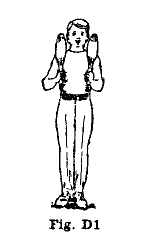
1. Clubs held in front of and close to the chest
opposite the shoulders. (This is known as the key position.) Fig D1
2. Clubs held at side horizontals in line with forearm.
3. Clubs held at front horizontals in line with forearm.
4. Clubs held over head in line with forearm.
5. Clubs held at sides of thighs in line with forearm.
In this nomenclature, it is assumed that all the movements are begun from the key position, viz., clubs opposite the shoulders and close to the chest.
IV. Circles
Movements in which the club describes a circle.
1. Arm. The fixed point is at the shoulder, the entire upper limb and club describing a circle.
a. In the lateral plane (about the dorso-ventral axis). Fig D2
(1) Right. (2) Left.
b. In the antero-posterior plane (about the lateral axis). Fig D3
(1)Forward. (2) Backward.
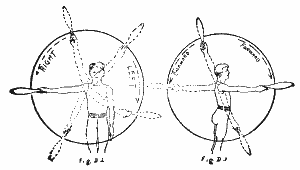
2. Forearm. The fixed point is at the elbow, the forearm and the club describing a circle. Upper arm is moved as little as possible.
a. In the lateral plane (about the dorso-ventral axis). Fig D4.Note: The forearm circles in the antero-posterior plane are not used very much.
(1) Right. (2) Left.
b. In the antero-posterior plane (about the lateral axis). Fig D5
(1) Forward. (2) Backward.
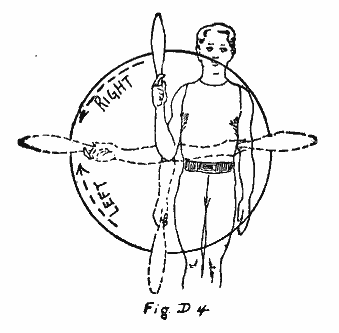
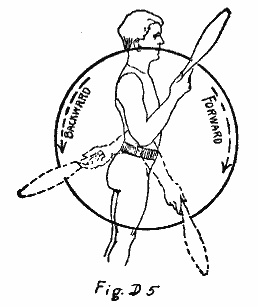
3. Hand. The fixed point is at the wrist, the hand and club describing a circle. The upper arm and the forearm are, of course, involved and may describe either a swing or circle.
a. In the lateral plane.Note: These hand circles may be in front of hips, behind the hips, at side horizontals, overhead, in front of the same or opposite shoulder, above and behind the same or opposite shoulder, or behind and below opposite shoulder, also about the lower extremities. Figs. D6 to D22.
(1) Right. (2) Left.
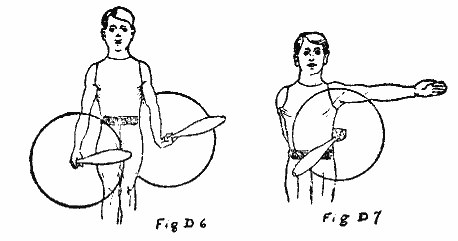
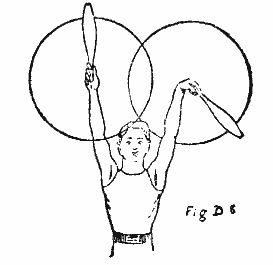

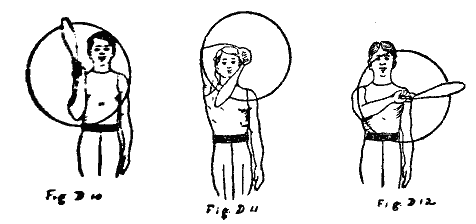

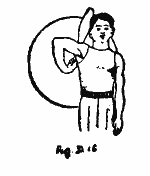
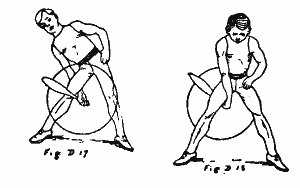
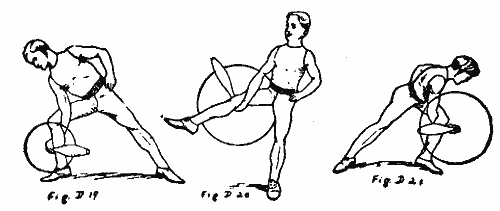
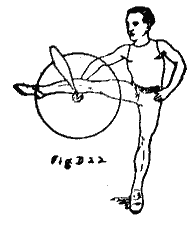
b. In the antero-posterior plane.Note: These hand circles may be at the shoulder, at the side of thighs, at front horizontals or overhead. Figs D23 to D30.
(1) Foreward. (2) Backward.
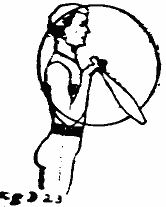
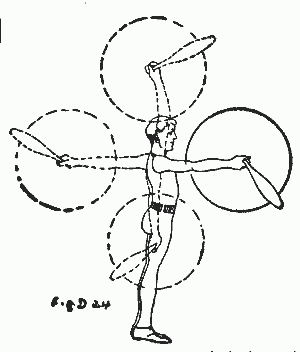
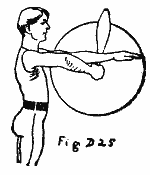

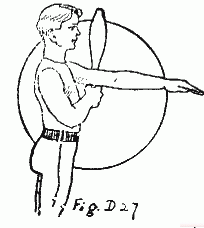
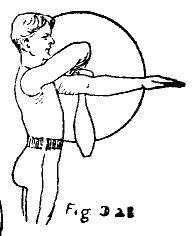
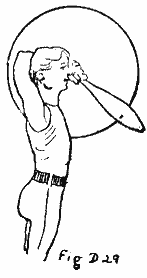
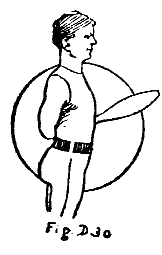
c. In the transverse plane.Note: These hand circles are executed while the arms are in or passing through the front horizontal position and may be above or below the forearm. Fig D31.
(1) Right. (2) Left.
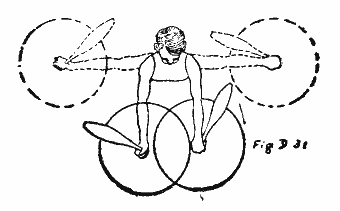
V. Swings
Movements in which the club describes a fraction of a circle.
Note: Direction same as for circles.
1. Arm. The fixed point is at the shoulder; the entire upper limb and club moves through a fraction of a circle.
a. In the lateral Plane. Fig D32.
(1) Right. (2) Left
b. In the antero-posterior plane
(1) Forward (2) Backward
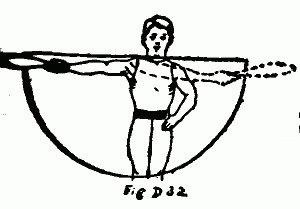
2. Forearm. The fixed point is at the elbow; the forearm and club moves through a fraction of a circle.
a. In the lateral plane. Fig D33
(1) Right (2) Left.
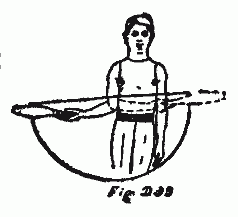
3. Hand. The fixed point is at the wrist; the club moves through a fraction of a circle. As in hand circles, the upper arm and forearm are involved to a less or greater degree and may describe a swing or a circle.
a. In the lateral plane. Fig D34.
(1) Right. (2) Left.
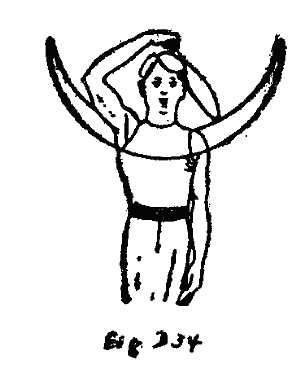
Note. These hand swings may be executed in front of the chest, in front
of the face, overhead, or behind the head.